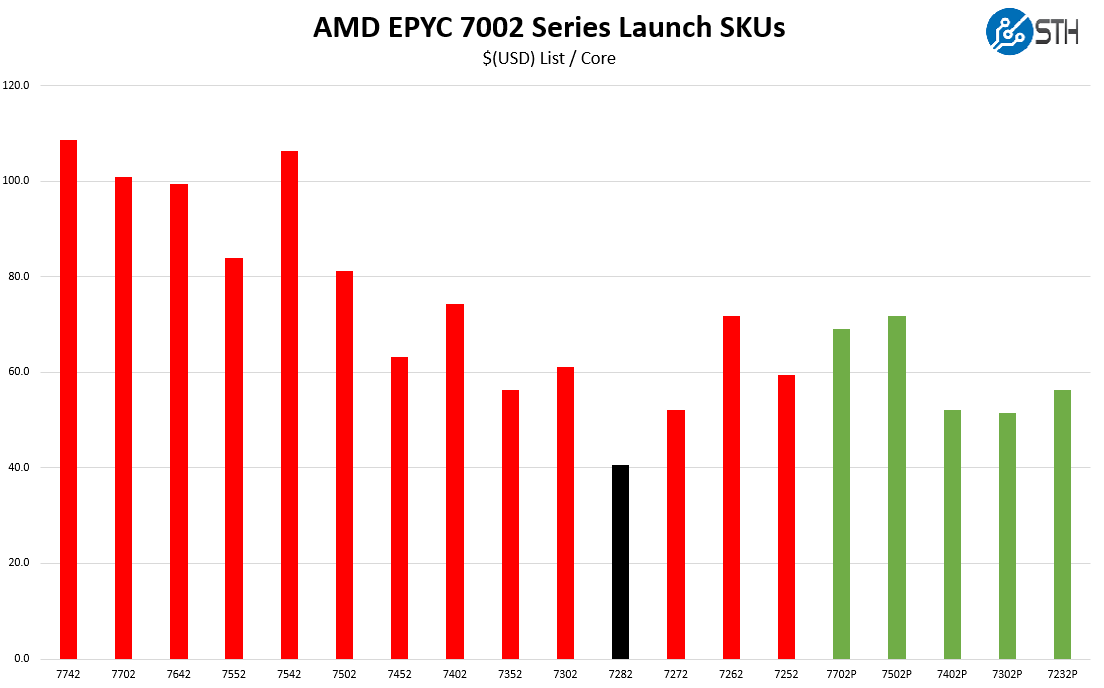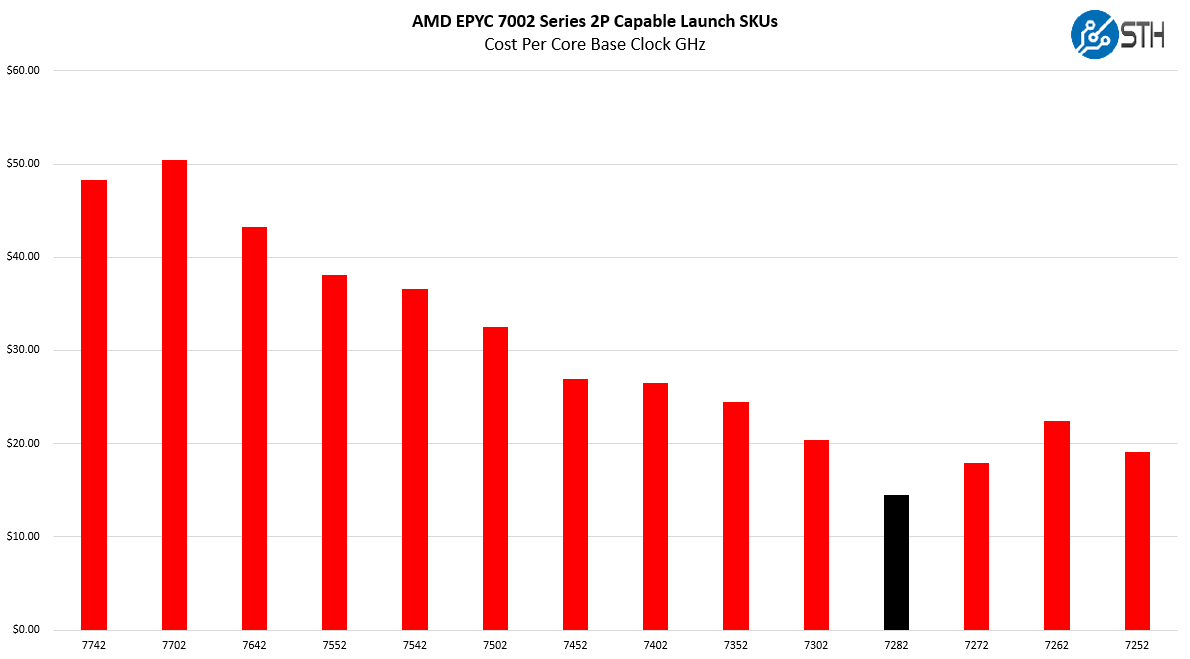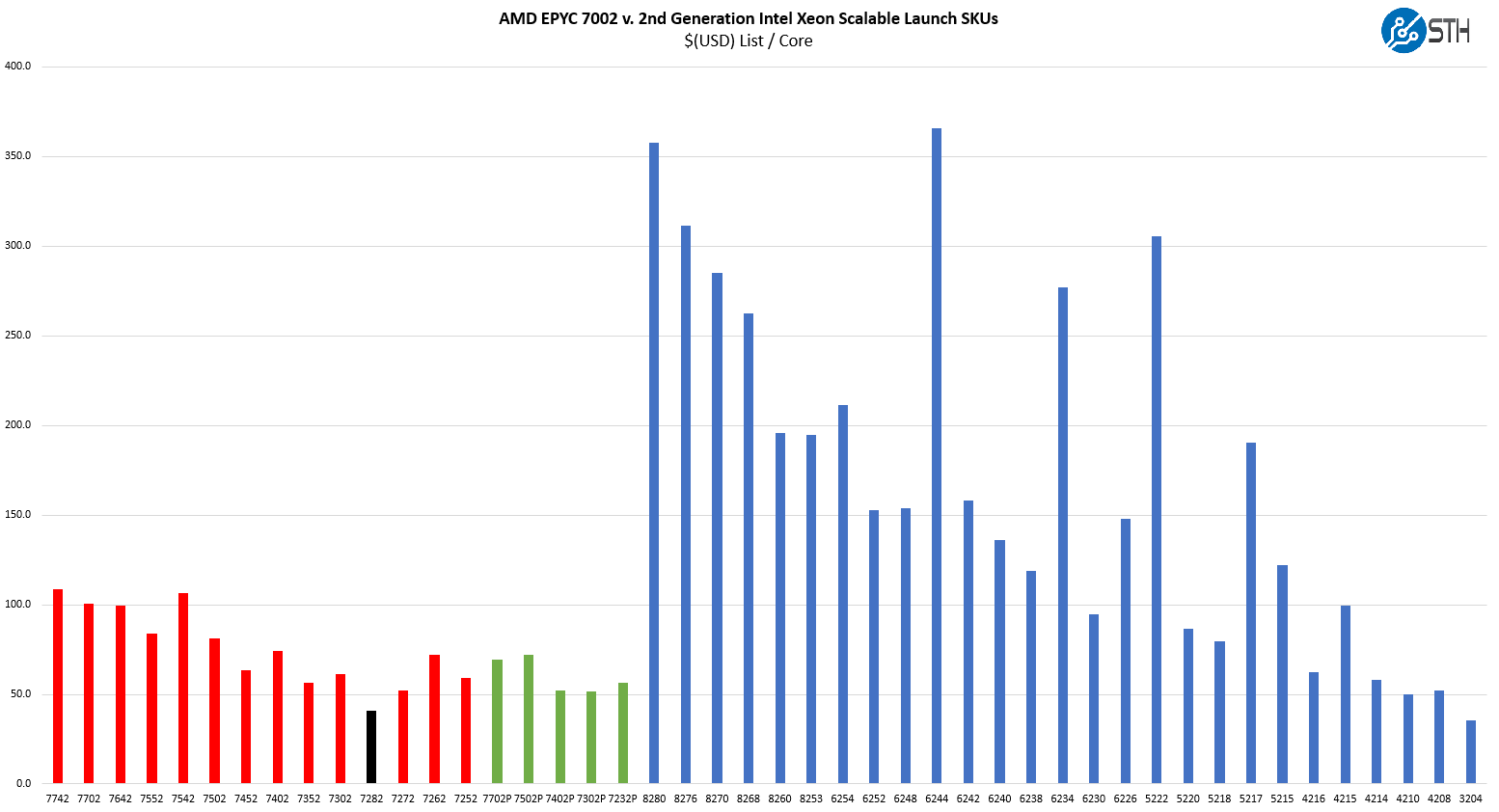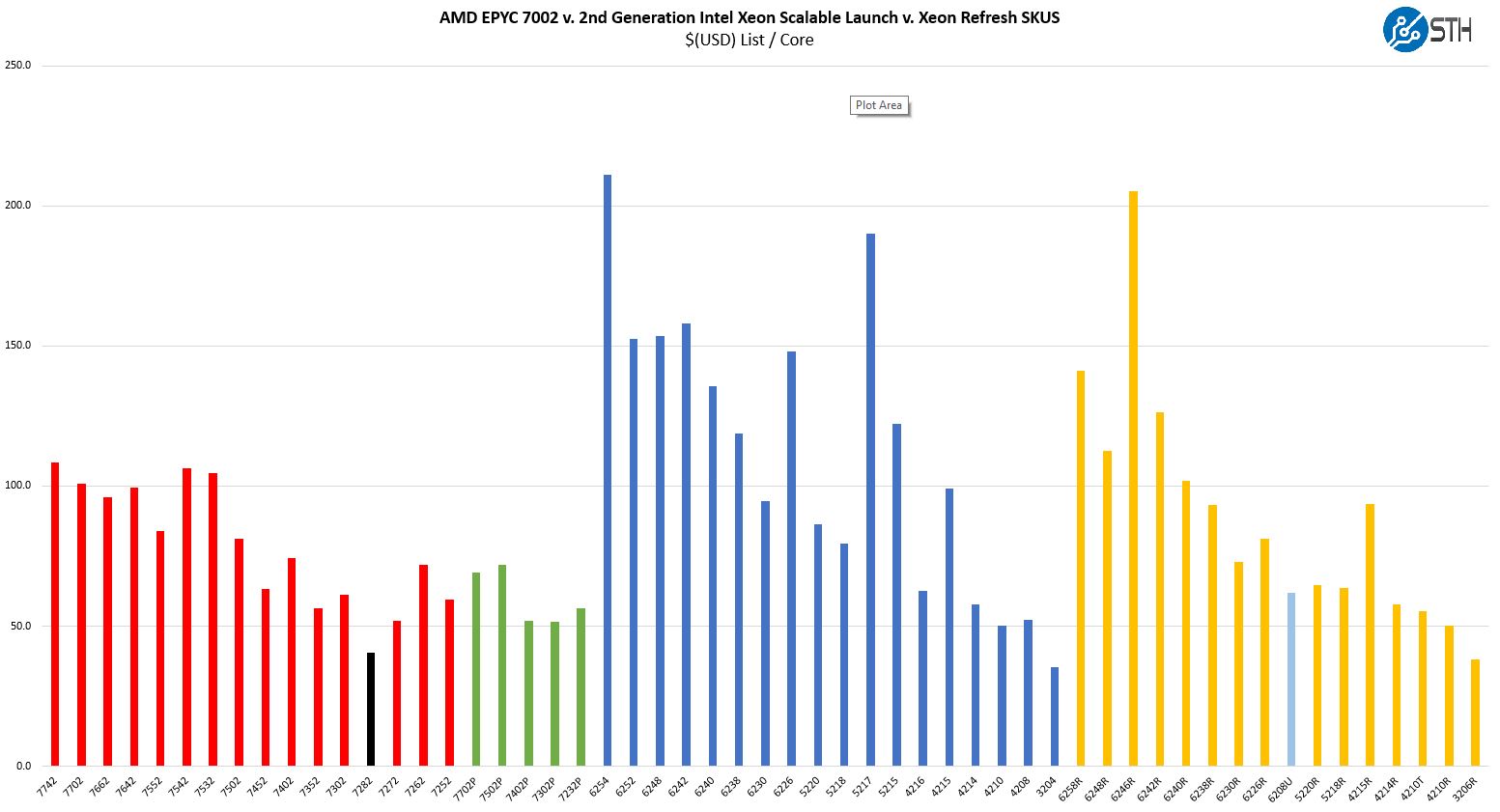AMD EPYC 7282 Market Positioning
Thes chips are not released in a vacuum instead, they have competition on both the Intel and AMD sides. When you purchase a server and select a CPU, it is important to see the value of a platform versus its competitors.
AMD EPYC 7282 v. AMD Alternatives
If you are using a single AMD EPYC CPU in a dual-socket system, with a hope to upgrade in the future, or if you want a low-cost CPU, the AMD EPYC 7282 is priced at an attractive level. It has great clock speeds and large caches.
Perhaps the most telling chart is where this chip falls on the AMD EPYC 7002 series price per core scale.

What is interesting here is that, given the $650 / 16 core price tag, this chip is actually less expensive than the AMD EPYC 7302P single-socket only part.
For organizations that use dual-socket servers, with low costs per core, this is certainly one of the better values on the market even when we bring clock speeds into the mix. When we look at the AMD EPYC 7282 versus the rest of the series, as we did in our AMD EPYC 7002 SKU List and Value Analysis article, we see the following:

There are other costs at play. The costs of the memory, system, drives, and infrastructure around the chips make it so that often it is more attractive to purchase a different SKU. Still, for those looking at low-cost CPUs, the EPYC 7282 is a great value that we confirmed on the benchmark side.
We have even heard some discuss this as being used as a workstation part in our forums. With the AMD Ryzen Threadripper 3960X having a higher price tag but significantly higher performance and better workstation platforms, we still think the EPYC 7282 is not well suited for that market.
AMD EPYC 7282 v. Intel Xeon Alternatives
Against the Intel competition, the AMD EPYC 7282 offers simply more than the original Intel Xeon Silver line could, and by a large margin. Although this is a AMD EPYC 7002 Half Memory Bandwidth SKU, it still has so much more from a platform perspective such as more PCIe lanes and PCIe Gen4 support, that it thoroughly trounces the Xeon Silver SKUs. Again, we wrote this piece before the 2nd Gen Intel Xeon Scalable Refresh so this may change but we generally know where the new Xeon Silvers should reach in terms of performance given their specs.
From a price/ performance perspective, the AMD EPYC 7282 compared to the Xeon Scalable launch SKUs looked extremely impressive.

When we remove the Xeon Platinum SKUs and add the refresh parts, this chart compresses:

As you can see, this is 16 core and 32 thread performance at around the same levels we see the Xeon Bronze 3206R 8 core/ 8 thread 1.9GHz CPU on a price per-core basis. Even with the refresh, AMD still has a lot of value here.
At this end of the Intel Xeon stack, Optane DCPMM is now supported on the similarly priced, albeit slightly more expensive Xeon Silver parts. That is a big change with the refresh. Here, AMD has a unique feature with PCIe Gen4 which you cannot get on the Intel side at the time of this writing.
What Intel has, is lower power consumption for single-socket applications. The 85W CPU TDP plus extra power for Intel’s Lewisburg PCH do not make up for how much power the AMD system can consume. At the same time, if you are using CPUs primarily for memory or I/O connectivity, then you will likely need fewer CPUs on the AMD side which will flip the scales again.
Final Words
Overall, the AMD EPYC 7282 is a great chip. It is one of AMD’s lower-power CPUs. While it is a 4-channel memory optimized part, it also still offers full EPYC 7002 series platform connectivity. That means one can build a big system around these low-cost 16 core/ 32 thread parts even at only $650 per CPU.
This is the last classic EPYC 7002 series CPU review you will see before we focus on the Intel Xeon Scalable refresh parts. It was actually written over a month before the refresh and the new SKUs are still being tested. Still, we think even with the refresh, this is a SKU that AMD is offering that has a ton of value and is still a category leader in the $650 server CPU market.




It’d be very nice to have some Threadrippers in the charts…
Hello,
i am a bit confused about the power consumption of the 7282 vs 7302p. Why is the 7302p so much better then the lower TDP 7282? I would have expected it the other way arround.
regards
John, you mention “This is not an enormous power burden on a rack even with 16 cores. In many systems built around these CPUs, the peripherals such as SSDs, accelerators, and NICs will use more power than the CPUs. ” on first page, but it would be good if you include “fans” there too. For example I see this tyan is using 2 fans. If those are like in my tyan, then they are screamers and every consume >55W which means just 3 fans have higher power consumption than the CPU itself.
So telling power consumption of whole box is nearly meaningless number if you do not mention precisely what components and with what power consumption exactly where inside the box.
Otherwise nice article!
The power consumption benchmark seems to be off, it doesn’t make sense that it would be higher than the 7302P, and others have reported much lower values. See here: https://forums.servethehome.com/index.php?threads/power-usage-of-amd-epyc-7282-vs-7302p.32478
Come fast reply